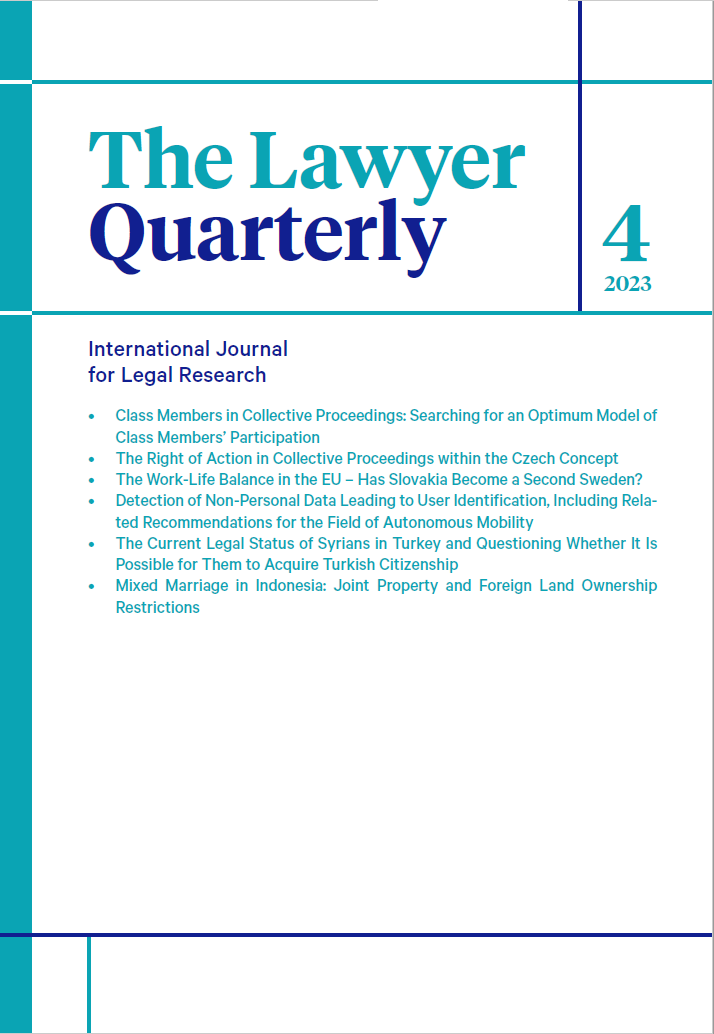THE WORK-LIFE BALANCE IN THE EU – HAS SLOVAKIA BECOME A SECOND SWEDEN?
Main Article Content
Abstract
In the presented article, we deal with the issue of work-life balance after the transposition of DIRECTIVE (EU) 2019/1158 OF THE EUROPEAN PARLIAMENT AND OF THE COUNCIL of 20 June 2019 on work-life balance for parents and carers into the Slovak legal order. In their publishing activities, the authors have been dealing with gender equality and the impact of European legal measures on the legal order of the Slovak Republic. The aforementioned directive was inspired by the Swedish parental leave system as well as the gender-equal approach to employees, but it must be noted that its adoption into the Slovak legal system was not without problems and the result is less than ideal. Through an analysis of the current law and comparison, the authors come up with their own considerations that would contribute to increasing the level of gender equality in the Slovak Republic and raise the status of working parents to at least the level of the European average.
Article Details
Copyright and originality of the offered manuscript
1. It is assumed that the manuscript offered has not been previously published. It is expected that the authors will inform the editorial board of TLQ if the entire manuscript, its parts or some relevant results have been previously published in a different publication at the level of an article in a reviewed scientific magazine or monograph. Should the editorial board of TLQ conclude that this condition was not fulfilled the review process may be terminated.
2. It is assumed that the submitted manuscript is an original academic work. If that is not the case the author needs to provide information regarding all circumstances that could raise doubts whether the manuscript is the outcome of original research.
3. By submitting the manuscript the author acknowledges that after the publication in The Lawyer Quarterly her/his work will be made available online to the Internet users and also kept by the Library of the Academy of Sciences of the Czech Republic. Author's rights to further use the work remain unabridged.

